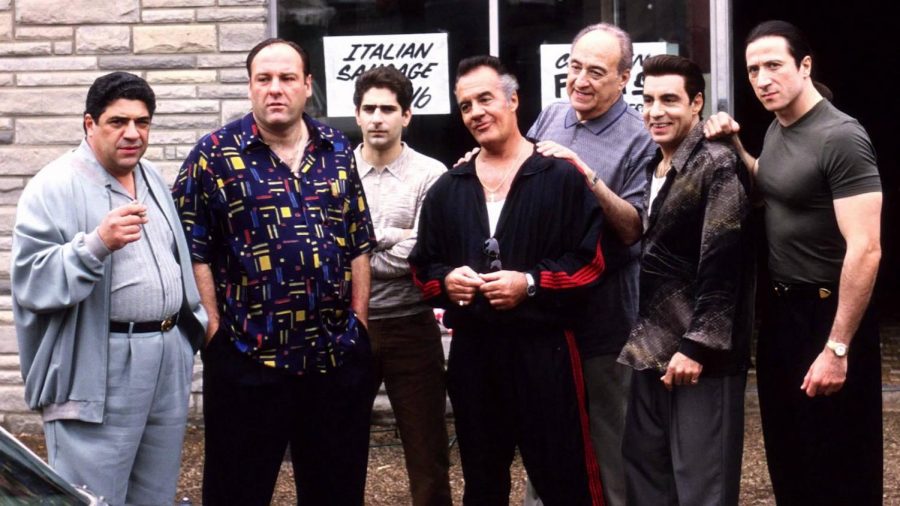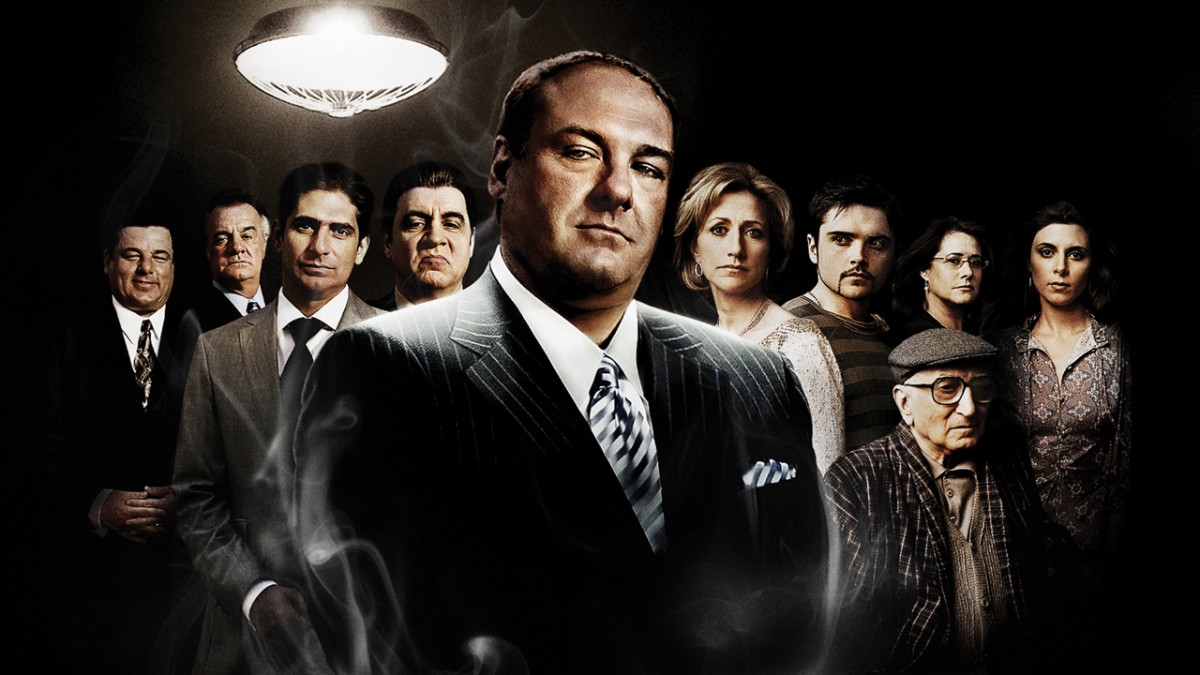
Nearly two decades have passed since the screen abruptly cut to black, leaving millions of ‘The Sopranos’ fans in stunned silence, a moment that instantly cemented its place as one of television’s most polarizing—and discussed—finales. The silence that followed was deafening, swiftly replaced by a cacophony of theories, debates, and impassioned arguments over the fate of Tony Soprano. For years, creator David Chase maintained a deliberate ambiguity, allowing the mystery to fester and grow, transforming the ending into a cultural phenomenon unto itself.
Yet, the enduring power of this narrative choice hasn’t diminished, and now, fueled by recent insights from Chase himself in interviews and the ‘Wise Guys’ documentary, the veil is finally beginning to lift. What many once saw as a narrative cop-out or a cruel joke is now revealed as a deeply considered artistic statement, steeped in philosophical intention and a profound understanding of life’s unpredictable nature. It’s an opportunity to revisit a masterwork and appreciate its layers anew, seeing the ‘why’ behind the infamous ‘what’.
We’ve had nearly 15 years to debate the ending, but the speculation, as it turns out, ends today. Join us as we explore the definitive answers, the surprising inspirations, and the intricate symbolism woven into those final, unforgettable moments, offering a fresh perspective on why ‘The Sopranos’ remains a benchmark for complex, intelligent television storytelling.

1. **David Chase Confirms Tony Soprano’s Death**For well over a decade, the question of Tony Soprano’s ultimate fate has loomed large over the television landscape, sparking countless fan theories and passionate discussions. Was he whacked in that diner? Did he live to see another quasi-ordinary day? The abrupt cut to black left viewers hanging, grappling with an unprecedented lack of narrative closure for a show of its stature. This ambiguity was, for many years, a sort of Schrödinger’s Cat situation, where Tony was simultaneously dead and alive until observed.
However, in recent candid discussions with The Hollywood Reporter and the HBO documentary ‘Wise Guys,’ David Chase, the mastermind behind the series, has finally provided a definitive answer. He explained, with surprising clarity, that his plan for Tony’s demise was indeed to have him killed. This wasn’t a random interpretation or a vague suggestion; it was the intended outcome, the narrative destination that he had conceptualized long before the final scene was even filmed. The speculation, it seems, can finally be laid to rest, offering a sense of resolution to a question that has plagued fans for so long.
Chase’s confirmation, though not visually explicit in the finale itself, solidifies the grim reality of Tony’s world. It affirms that the consequences of his life as a mob boss were inescapable, an inevitable conclusion for a character who had long grappled with his own mortality. While the scene itself left the audience to imagine the specifics, Chase’s retrospective clarity leaves little doubt about the ultimate tragic end of the journey he charted for Tony.

2. **The Original Vision: A Meeting in New York**While the diner scene at Holsten’s has become legendary, it wasn’t David Chase’s initial concept for Tony Soprano’s final moments. The creative process often involves numerous ideas and revisions, and ‘The Sopranos’ finale was no exception. Chase revealed that he had an earlier, equally stark vision for how Tony’s story would conclude, one that leaned into the established visual motif of the series.
His original scene was set to depict Tony returning from a meeting in New York, driving his car. Chase explained, “At the beginning of every show, he came from New York into New Jersey, and the last scene could be him coming from New Jersey back into New York for a meeting at which he was going to be killed.” This concept would have inverted the show’s iconic opening sequence, bringing Tony’s journey full circle from the familiar New York skyline to his final, deadly encounter within it. It was a poetic, if grim, bookend to his narrative.
This earlier vision underscores Chase’s consistent intention for Tony’s death, regardless of the setting. It was always about the inescapable nature of his chosen life. The shift from a more formal, mob-meeting assassination to the mundane setting of a diner highlights Chase’s eventual preference for subverting expectations and grounding the epic in the everyday, making the inevitable even more jarring and poignant.
3. **The Genesis of the Diner Setting: A Chance Encounter**The iconic setting of Holsten’s diner, where the Soprano family shares their last meal before the abrupt cut to black, was born not from extensive planning, but from a serendipitous observation by David Chase. It speaks to the way inspiration can strike at the most unexpected moments, transforming a mundane detail into a pivotal piece of cinematic history. This choice of a seemingly ordinary location amplified the tension and made the eventual cut to black all the more impactful.
Chase recounted his experience, stating, “I was driving on Ocean Park Boulevard near the airport and I saw a little restaurant. It was kind of like a shack that served breakfast.” This simple observation, years before the finale was even conceived, lodged itself in his mind. He continued, “And for some reason I thought, ‘Tony should get it in a place like that.’ Why? I don’t know. That was, like, two years before.” The idea of Tony meeting his end in such an unassuming, everyday establishment appealed to him.
The selection of a diner, a place synonymous with American life and family gatherings, served to heighten the contrast with the brutal reality of Tony’s profession. It allowed for the gradual build-up of suspense through seemingly innocuous details – the ding of the door, the glances at strangers – transforming a familiar setting into a crucible of dread. This choice ultimately grounded the show’s larger themes of mortality and fate in the relatable fabric of daily life, making the potential violence feel more immediate and unsettling.

4. **Chase’s Frustration with Fan Fixation on Tony’s Death**While David Chase has now clarified Tony Soprano’s fate, his long-standing reluctance to do so stemmed from a deep-seated frustration with what he perceived as the audience’s narrow focus. He found it annoying that, after seven years of complex character development and thematic exploration, many viewers were primarily concerned with the literal, violent outcome for the protagonist rather than the deeper questions the finale posed.
Chase openly admitted that the fixation on Tony’s death “bothered” him, highlighting a disconnect between his artistic intentions and audience expectations. He expressed his exasperation, saying, “They wanted to know that Tony was killed. They wanted to see him go face-down in linguini, you know?” This desire for a graphic, definitive end seemed, to Chase, to miss the point of the journey the show had taken them on. He challenged the audience: “And I just thought, ‘God, you watched this guy for seven years and I know he’s a criminal. But don’t tell me you don’t love him in some way, don’t tell me you’re not on his side in some way. And now you want to see him killed? You’re a criminal after watching this for seven years.’”
His annoyance also extended to the broader cultural conversation surrounding the finale. Chase remarked, “I had no idea it would cause that much—I mean, I forget what was going on in Iraq or someplace; London had been bombed! Nobody was talking about that; they were talking about The Sopranos.” This comment underscores his belief that the profound philosophical and existential questions embedded in the ending were overshadowed by a sensationalist hunger for a definitive conclusion, prompting him to withhold clarity for so long.

5. **The Deeper Philosophical Meaning of “Don’t Stop Believin'”**The inclusion of Journey’s iconic anthem, “Don’t Stop Believin’,” in ‘The Sopranos’ finale was a controversial choice among the crew, yet it was precisely their strong reaction that solidified David Chase’s decision. Far from being a random or purely contrary selection, the song was meticulously chosen to encapsulate layers of profound philosophical meaning, serving as an unexpected, yet perfect, soundtrack to the Soprano family’s final moments on screen.
Chase didn’t shy away from the song’s overt sentimentality; instead, he embraced how its lyrics could resonate with the underlying themes of life, fate, and the search for meaning. The song, in its very essence, became a philosophical cornerstone for the scene. He noted that the timing of specific lyrics was crucial, intertwining directly with character entrances and narrative beats, almost as if fate itself was singing along with the scene’s unfolding drama.
This deliberate musical choice moved beyond simple nostalgia, serving as a complex commentary on hope and illusion within a world inherently devoid of easy answers. It challenged viewers to look past the surface-level familiarity of the song and recognize its deeper ironic or poignant implications in the context of Tony Soprano’s life. The song’s presence made the scene not just about what happened, but about what everyone, including the characters, continued to believe in, despite the looming uncertainty.

6. **”The Midnight Train”: A Metaphor for Life’s Inevitable Path**David Chase masterfully wove the lyrics of “Don’t Stop Believin'” into the very fabric of the final scene, imbuing commonplace phrases with profound symbolic weight. He highlighted a specific line from the song, drawing a direct parallel between the characters and their life trajectories, particularly in how it reflected the enduring, often dark, paths they had chosen long ago. This wasn’t merely background music; it was narrative poetry.
Chase emphasized the entry of Carmela into the diner, stating, “I love the timing of the lyric when Carmela enters: ‘Just a small town girl livin’ in a lonely world, she took the midnight train goin’ anywhere.’” He then connected this to Tony: “Then it talks about Tony: ‘Just a city boy,’ and we had to dim down the music so you didn’t hear the line, ‘born and raised in South Detroit.’ The music cuts out a little bit there, and they’re speaking over it. ‘He took the midnight train goin’ anywhere.’”
For Chase, this refrain was everything. He felt that “those two characters had taken the midnight train a long time ago. That is their life.” The ‘midnight train,’ in his interpretation, wasn’t just a physical journey but a metaphor for a life defined by certain choices and an inevitable, often dark, trajectory. It signifies a search for something unattainable, a path from which there’s no turning back, reflecting the inherent lack of true resolution in their lives and the world of the mafia they inhabited. They were on a journey with no easy destination, heading ‘anywhere’ into an uncertain future.




